Immune Relationship to Lung Tumor Evolution Characterized
|
By LabMedica International staff writers Posted on 04 Apr 2019 |
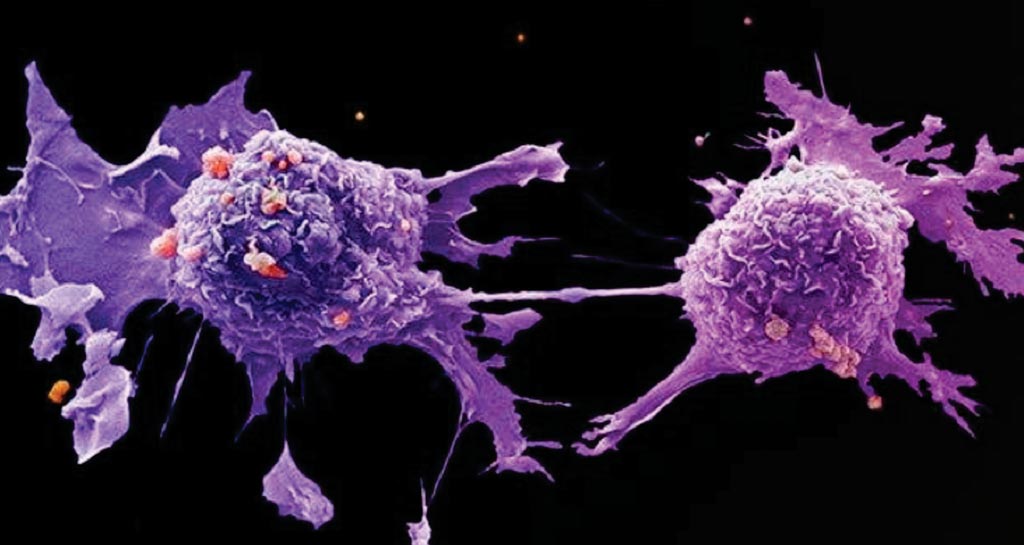
Image: A scanning electron micrograph (SEM) of lung cancer cells (Photo courtesy of Cancer Research UK).
Non-small-cell lung carcinoma (NSCLC) is any type of epithelial lung cancer other than small cell lung carcinoma (SCLC). NSCLC accounts for about 85% of all lung cancers. As a class, NSCLCs are relatively insensitive to chemotherapy, compared to small cell carcinoma.
The interplay between an evolving cancer and a dynamic immune microenvironment remains unclear. Scientists have started to unravel the complex relationships between immunoediting, immune cell infiltration, neoantigen formation, and clonal evolution in non-small cell lung cancer (NSCLC) tumors.
A team of scientists at the University College London Cancer Institute (London, UK) used RNA sequencing, tumor infiltrating lymphocyte analyses, reduced-representation bisulfite sequencing, and other approaches to assess hundreds of samples from 88 early-stage, untreated NSCLC cases, selected from a set of lung cancers previously profiled by multi-region exome sequencing for the Tracking Non-Small Cell Lung Cancer Evolution through Therapy (TRACERx) project.
Along with promoter methylation shifts for genes with new antigen-producing mutations, or neoantigens, the team saw differences in immune cell infiltration from one tumor to the next, and within different parts of the same NSCLC tumor. Those immune infiltration differences appeared to influence tumor immunoediting and the extent to which neoantigens turned up in the tumors, highlighting the combined impact that the tumor microenvironment, tumor mutations, and altered gene regulation can have on tumor evolution.
The group focused on immune cell infiltration in 258 regions from 88 NSCLCs in the exome-sequenced TRACERx 100 cohort, including 164 regions from 64 tumors that were assessed by RNA-seq. They also considered histopathology-based tumor infiltrating lymphocyte profiles for 234 regions from 83 NSCLC tumors. After looking at how well the RNA-seq-based immune estimates lined up with tumor infiltrating lymphocyte profiles generated by pathology, the team compared expression, mutation, and methylation features in the context of tumor region, immune cell infiltration levels, patient outcomes, and the histology of the NSCLC tumor involved.
The results indicated that more than 40% of the tumors had consistently low immune infiltration, while 28% apiece had either consistently high infiltration or immune infiltration that varied by region. In the latter tumors, they noted, variability in immune infiltration appeared to coincide with tumor mutation heterogeneity. In the NSCLC tumors with adenocarcinoma histology, the team saw declining sub-clonal diversity as CD8+ T cell infiltration increased, and vice versa, though this pattern did not hold in the lung squamous cell carcinoma cases.
The investigators found evidence supporting the notion that immune infiltration levels influenced tumor immunoediting, clonal evolution, and neoantigen loss through copy number changes or decreased transcript expression. With RRBS-based methylation analysis on 79 tumor samples from 28 cases, for example, they detected a significant uptick in promoter methylation in genes with non-expression neoantigens.
The authors concluded that their results provide evidence that tumor evolution is shaped through immunoediting mechanisms that affect either antigen presentation or neoantigenic mutations themselves, at both the DNA and RNA level arguing that the beneficial role of successful immune surveillance, and the diversity of immune-evasion mechanisms, should be considered and harnessed in immunotherapeutic interventions. The study was published on March 20, 2019, in the journal Nature.
Related Links:
University College London Cancer Institute
The interplay between an evolving cancer and a dynamic immune microenvironment remains unclear. Scientists have started to unravel the complex relationships between immunoediting, immune cell infiltration, neoantigen formation, and clonal evolution in non-small cell lung cancer (NSCLC) tumors.
A team of scientists at the University College London Cancer Institute (London, UK) used RNA sequencing, tumor infiltrating lymphocyte analyses, reduced-representation bisulfite sequencing, and other approaches to assess hundreds of samples from 88 early-stage, untreated NSCLC cases, selected from a set of lung cancers previously profiled by multi-region exome sequencing for the Tracking Non-Small Cell Lung Cancer Evolution through Therapy (TRACERx) project.
Along with promoter methylation shifts for genes with new antigen-producing mutations, or neoantigens, the team saw differences in immune cell infiltration from one tumor to the next, and within different parts of the same NSCLC tumor. Those immune infiltration differences appeared to influence tumor immunoediting and the extent to which neoantigens turned up in the tumors, highlighting the combined impact that the tumor microenvironment, tumor mutations, and altered gene regulation can have on tumor evolution.
The group focused on immune cell infiltration in 258 regions from 88 NSCLCs in the exome-sequenced TRACERx 100 cohort, including 164 regions from 64 tumors that were assessed by RNA-seq. They also considered histopathology-based tumor infiltrating lymphocyte profiles for 234 regions from 83 NSCLC tumors. After looking at how well the RNA-seq-based immune estimates lined up with tumor infiltrating lymphocyte profiles generated by pathology, the team compared expression, mutation, and methylation features in the context of tumor region, immune cell infiltration levels, patient outcomes, and the histology of the NSCLC tumor involved.
The results indicated that more than 40% of the tumors had consistently low immune infiltration, while 28% apiece had either consistently high infiltration or immune infiltration that varied by region. In the latter tumors, they noted, variability in immune infiltration appeared to coincide with tumor mutation heterogeneity. In the NSCLC tumors with adenocarcinoma histology, the team saw declining sub-clonal diversity as CD8+ T cell infiltration increased, and vice versa, though this pattern did not hold in the lung squamous cell carcinoma cases.
The investigators found evidence supporting the notion that immune infiltration levels influenced tumor immunoediting, clonal evolution, and neoantigen loss through copy number changes or decreased transcript expression. With RRBS-based methylation analysis on 79 tumor samples from 28 cases, for example, they detected a significant uptick in promoter methylation in genes with non-expression neoantigens.
The authors concluded that their results provide evidence that tumor evolution is shaped through immunoediting mechanisms that affect either antigen presentation or neoantigenic mutations themselves, at both the DNA and RNA level arguing that the beneficial role of successful immune surveillance, and the diversity of immune-evasion mechanisms, should be considered and harnessed in immunotherapeutic interventions. The study was published on March 20, 2019, in the journal Nature.
Related Links:
University College London Cancer Institute
Latest Immunology News
- Gene Signature Test Predicts Response to Key Breast Cancer Treatment
- Chip Captures Cancer Cells from Blood to Help Select Right Breast Cancer Treatment
- Blood-Based Liquid Biopsy Model Analyzes Immunotherapy Effectiveness
- Signature Genes Predict T-Cell Expansion in Cancer Immunotherapy
- Molecular Microscope Diagnostic System Assesses Lung Transplant Rejection
- Blood Test Tracks Treatment Resistance in High-Grade Serous Ovarian Cancer
- Luminescent Probe Measures Immune Cell Activity in Real Time
- Blood-Based Immune Cell Signatures Could Guide Treatment Decisions for Critically Ill Patients
- Novel Tool Predicts Most Effective Multiple Sclerosis Medication for Patients
- Companion Diagnostic Test for CRC Patients Identifies Eligible Treatment Population
- Novel Tool Uses Deep Learning for Precision Cancer Therapy
- Companion Diagnostic Test Identifies HER2-Ultralow Breast Cancer and Biliary Tract Cancer Patients
- Novel Multiplex Assay Supports Diagnosis of Autoimmune Vasculitis
- Blood Test Predicts Immunotherapy Efficacy in Triple-Negative Breast Cancer
- Simple Genetic Testing Could Predict Treatment Success in Multiple Sclerosis Patients
- Novel Gene Signature Predicts Immunotherapy Response in Advanced Kidney Cancers
Channels
Clinical Chemistry
view channel
Chemical Imaging Probe Could Track and Treat Prostate Cancer
Prostate cancer remains a leading cause of illness and death among men, with many patients eventually developing resistance to standard hormone-blocking therapies. These drugs often lose effectiveness... Read more
Mismatch Between Two Common Kidney Function Tests Indicates Serious Health Problems
Creatinine has long been the standard for measuring kidney filtration, while cystatin C — a protein produced by all human cells — has been recommended as a complementary marker because it is influenced... Read moreMolecular Diagnostics
view channel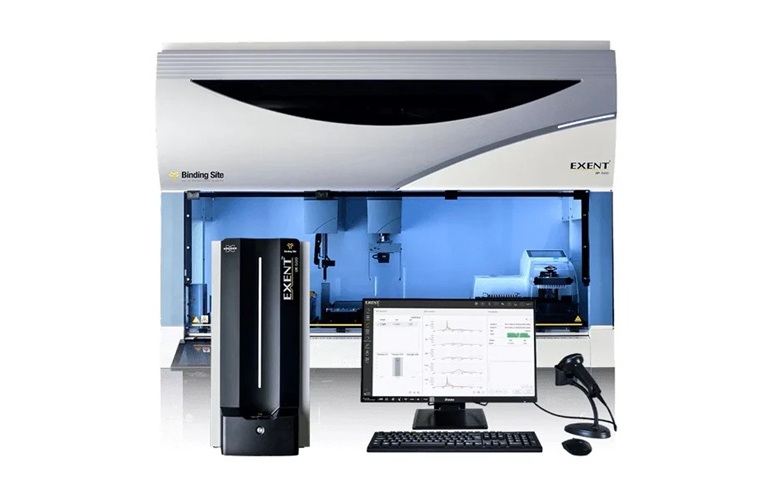
First-Of-Its-Kind Automated System Speeds Myeloma Diagnosis
More than 176,000 people are diagnosed with multiple myeloma worldwide each year, yet the current diagnostic pathway can be slow and uncertain, often relying on a highly subjective interpretation of test results.... Read more
Blood Protein Profiles Predict Mortality Risk for Earlier Medical Intervention
Elevated levels of specific proteins in the blood can signal increased risk of mortality, according to new evidence showing that five proteins involved in cancer, inflammation, and cell regulation strongly... Read moreHematology
view channel
Platelet Activity Blood Test in Middle Age Could Identify Early Alzheimer’s Risk
Early detection of Alzheimer’s disease remains one of the biggest unmet needs in neurology, particularly because the biological changes underlying the disorder begin decades before memory symptoms appear.... Read more
Microvesicles Measurement Could Detect Vascular Injury in Sickle Cell Disease Patients
Assessing disease severity in sickle cell disease (SCD) remains challenging, especially when trying to predict hemolysis, vascular injury, and risk of complications such as vaso-occlusive crises.... Read more
ADLM’s New Coagulation Testing Guidance to Improve Care for Patients on Blood Thinners
Direct oral anticoagulants (DOACs) are one of the most common types of blood thinners. Patients take them to prevent a host of complications that could arise from blood clotting, including stroke, deep... Read moreMicrobiology
view channel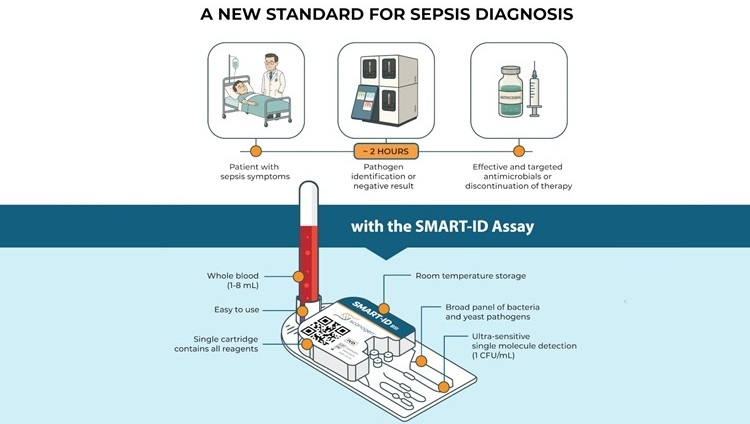
Rapid Assay Identifies Bloodstream Infection Pathogens Directly from Patient Samples
Bloodstream infections in sepsis progress quickly and demand rapid, precise diagnosis. Current blood-culture methods often take one to five days to identify the pathogen, leaving clinicians to treat blindly... Read more
Blood-Based Molecular Signatures to Enable Rapid EPTB Diagnosis
Extrapulmonary tuberculosis (EPTB) remains difficult to diagnose and treat because it spreads beyond the lungs and lacks easily accessible biomarkers. Despite TB infecting 10 million people yearly, the... Read more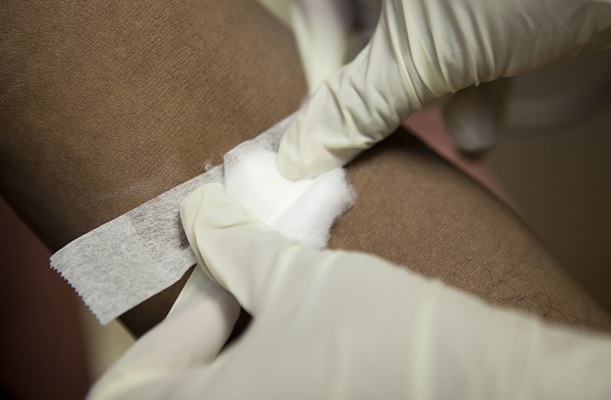
15-Minute Blood Test Diagnoses Life-Threatening Infections in Children
Distinguishing minor childhood illnesses from potentially life-threatening infections such as sepsis or meningitis remains a major challenge in emergency care. Traditional tests can take hours, leaving... Read more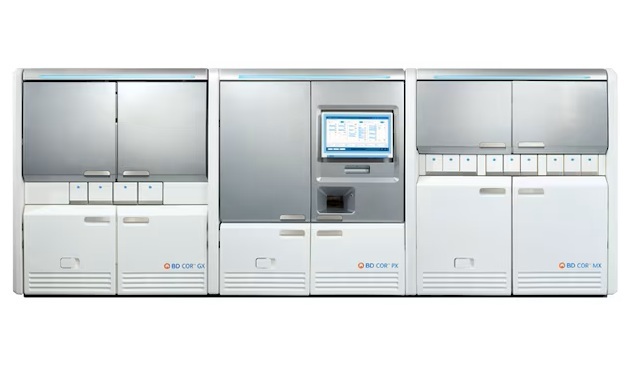
High-Throughput Enteric Panels Detect Multiple GI Bacterial Infections from Single Stool Swab Sample
Gastrointestinal (GI) infections are among the most common causes of illness worldwide, leading to over 1.7 million deaths annually and placing a heavy burden on healthcare systems. Conventional diagnostic... Read morePathology
view channel
AI Tool Outperforms Doctors in Spotting Blood Cell Abnormalities
Diagnosing blood disorders depends on recognizing subtle abnormalities in cell size, shape, and structure, yet this process is slow, subjective, and requires years of expert training. Even specialists... Read more
AI Tool Rapidly Analyzes Complex Cancer Images for Personalized Treatment
Complex digital biopsy images that typically take an expert pathologist up to 20 minutes to assess can now be analyzed in about one minute using a new artificial intelligence (AI) tool. The technology... Read moreTechnology
view channel
AI Saliva Sensor Enables Early Detection of Head and Neck Cancer
Early detection of head and neck cancer remains difficult because the disease produces few or no symptoms in its earliest stages, and lesions often lie deep within the head or neck, where biopsy or endoscopy... Read more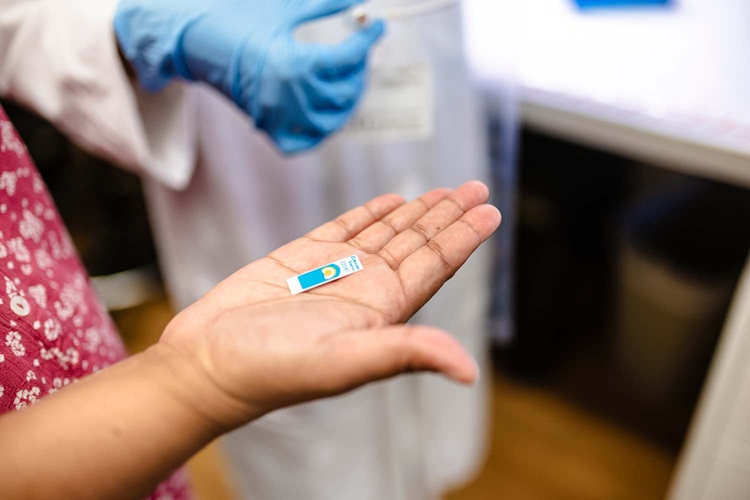
AI-Powered Biosensor Technology to Enable Breath Test for Lung Cancer Detection
Detecting lung cancer early remains one of the biggest challenges in oncology, largely because current tools are invasive, expensive, or unable to identify the disease in its earliest phases.... Read moreIndustry
view channel
Abbott Acquires Cancer-Screening Company Exact Sciences
Abbott (Abbott Park, IL, USA) has entered into a definitive agreement to acquire Exact Sciences (Madison, WI, USA), enabling it to enter and lead in fast-growing cancer diagnostics segments.... Read more




 assay.jpg)

















